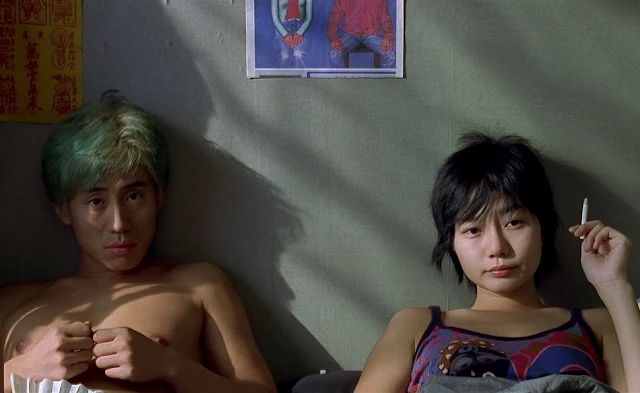Doyamoyee: Sharmila Tagore
Umaprasad: Soumitra Chatterjee
Kalikinkar Roy: Chhabi Biswas
Harasundari: Karuna Bannerjee
Taraprasad: Purnendu Mukherjee
Khoka: Arpan Chowdhury
Director: Satyajit Ray
Screenplay: Satyajit Ray
Based on a story by Prabhat Kumar Mukherjee
Cinematography: Subrata Mitra
Music: Ali Akbar Khan
The dialectic of tradition and change that informs so many of Satyajit Ray's films is uppermost in Devi, as is the director's ongoing portrayal of the role of women in Indian society. Doya is Uma's 17-year-old wife, enchantingly beautiful and touchingly naive. She wonders why Uma must leave her to go study in Calcutta -- he doesn't need the money, she says. Indeed, his family is rich, but Uma's desire to become something more than the son of the wealthy Kalikinkar is beyond Doya's limited experience. While he's away, Doya becomes a much-loved member of the household, to the point that her sister-in-law, Harasundari, feels jealous that Khoka, the son of Harasundari and Taraprasad, seems to love Doya more than his own mother. Doya's father-in-law, Kalikinkar, is so infatuated with her that one night he dreams that she is the incarnation of the goddess Kali, to whom his own name is a sign of his devotion. Kalikinkar proclaims his vision and sets up a special place in the house for Doya to be venerated. The girl is bewildered, but powerless to protest. A man who has heard of the incarnated goddess brings his seriously ill son, who has so far not benefited from medical treatment, to the house, praying for help, and when the boy recovers, Doya attracts crowds of the faithful. Alerted to what's going on, Uma returns home, but is unable to persuade the frightened Doya to go away with him. Then young Khoka falls ill and Kalikinkar insists that his parents send away the doctors and allow Doya alone to cure him. The boy dies, and Uma comes home again to find his wife destroyed by the experience. What is essentially a fable about misplaced faith gains immense strength and dignity from Ray's straightforward treatment, which emphasizes the increasing entrapment of Doya in a situation she can't control. Tagore's haunting performance and Biswas's portrayal of Kalikinkar's mad obsession are highlights of a still-provocative film. It became a cause célèbre in India after politicians decided it somehow insulted Hinduism, and only the intervention of Prime Minister Nehru allowed Devi to be shown abroad.
Watched on Filmstruck Criterion Channel









